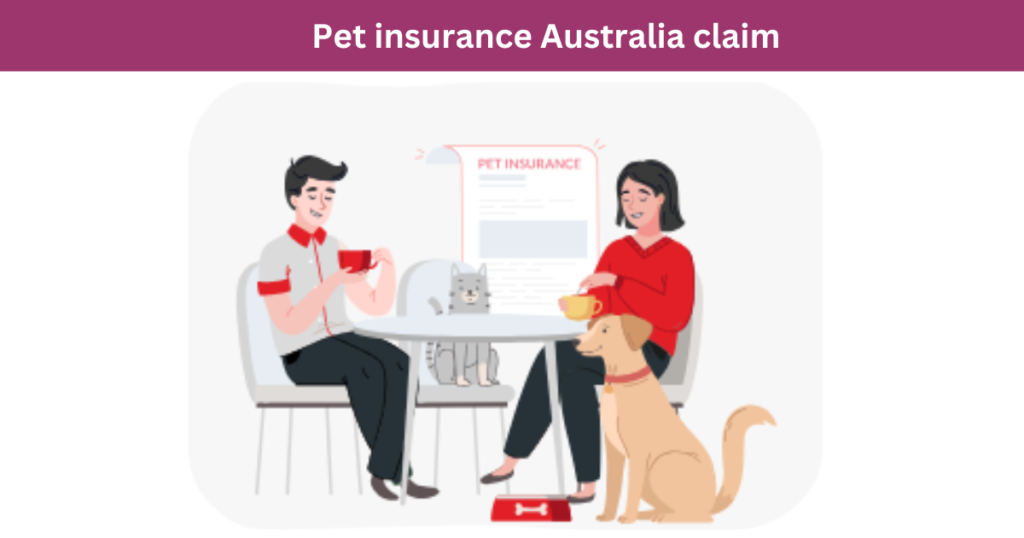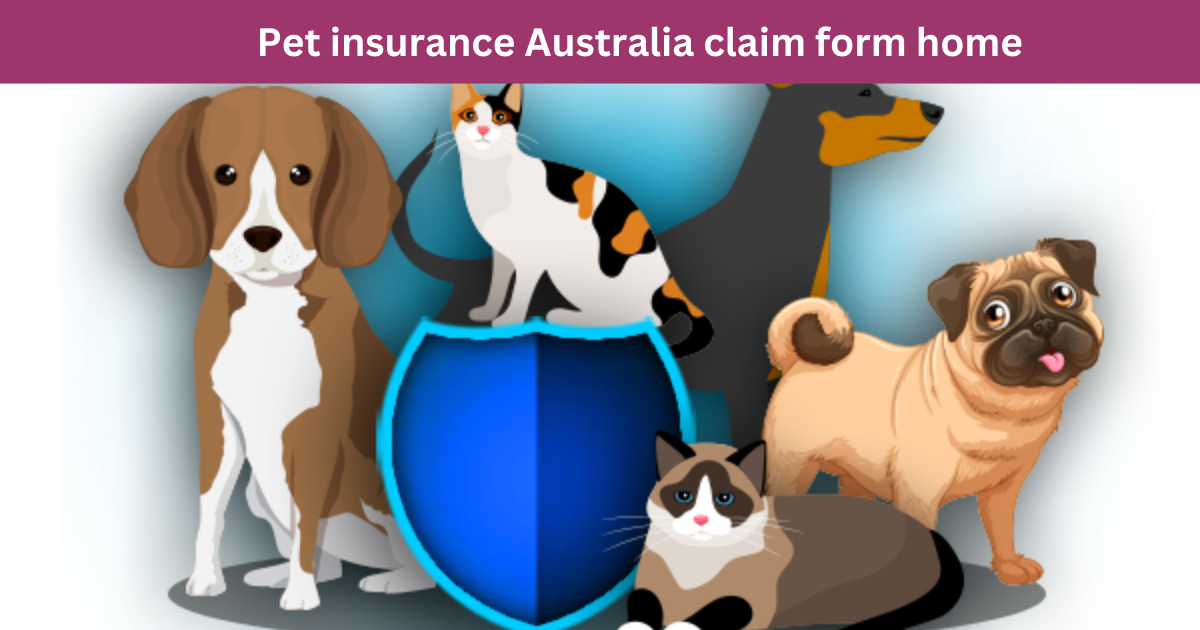Pet insurance is a valuable financial tool that helps pet owners manage the costs of veterinary care for their beloved animals. Just like health insurance for humans, pet insurance provides coverage for unexpected medical expenses that can arise due to accidents, illnesses, or other health conditions. In this guide, we’ll explore the ins and outs of pet insurance, including what it covers, how it works, and how to choose the right policy for your furry companion.
What is Pet Insurance? Pet insurance is a type of insurance policy designed to help pet owners cover the costs of veterinary care. It typically reimburses a portion of eligible veterinary expenses, including treatments, surgeries, medications, and diagnostic tests. Pet insurance can provide financial protection and peace of mind by offsetting the high costs of unexpected veterinary bills, allowing pet owners to focus on their pet’s health without worrying about the expens

Pet insurance is a valuable investment that provides financial protection for your beloved pets in case of unexpected accidents, illnesses, or injuries. Here’s a detailed breakdown of pet insurance and its key components:
Coverage Options Pet insurance
- Accident Coverage pet insurance
- This component of pet insurance reimburses pet owners for veterinary expenses incurred as a result of accidental injuries to their pets. Examples of accidents covered include broken bones, lacerations, or ingestion of foreign objects.
- Accident coverage ensures that pet owners can seek prompt medical treatment for their pets in the event of unforeseen accidents, without worrying about the financial burden.
- Illness Coverage Pet insurance
- Illness coverage addresses the diagnosis and treatment of various illnesses and health conditions that may affect pets. This includes infections, allergies, cancer, and chronic diseases such as diabetes or kidney disease.
- With illness coverage, pet owners can receive financial assistance for veterinary expenses related to diagnosing and managing their pet’s health conditions, ensuring their furry companions receive the necessary medical care.
- Wellness Care Pet insurance
- Wellness care is an optional coverage offered by some pet insurance plans, aimed at offsetting the cost of routine veterinary care. This includes preventive measures such as vaccinations, annual check-ups, dental cleanings, and preventive medications.
- While not all pet insurance plans include wellness care, it can be beneficial for pet owners who want to proactively maintain their pet’s health and well-being through regular veterinary visits.
- Hereditary and Congenital Conditions Pet insurance
- This aspect of pet insurance provides coverage for genetic conditions and birth defects that may affect a pet’s health. Examples include hip dysplasia, heart disease, or certain types of cancers with a hereditary component.
- Coverage for hereditary and congenital conditions ensures that pet owners can afford the necessary medical care to manage these inherited health issues in their pets.
- Behavioral Therapy Pet insurance
- Some pet insurance plans offer coverage for behavioral therapy or training sessions to address behavioral issues in pets. This may include anxiety, aggression, compulsive behaviors, or other behavioral problems.
- Behavioral therapy coverage acknowledges the importance of addressing behavioral issues in pets to improve their quality of life and strengthen the bond between pets and their owners.
- Alternative Therapies Pet insurance
- Pet insurance coverage may extend to alternative therapies beyond traditional veterinary treatments. These may include acupuncture, chiropractic care, or hydrotherapy, particularly for pets with musculoskeletal or neurological conditions.
- Alternative therapy coverage reflects the growing interest in holistic and complementary approaches to pet healthcare, providing pet owners with additional options for managing their pet’s health and well-being.
How Pet Insurance Works Pet insurance
- Enrollment: To get started with pet insurance, you’ll need to choose a plan that suits your pet’s needs and enroll them in the policy. During the enrollment process, you’ll provide details such as your pet’s age, breed, and medical history. This information helps the insurance company assess your pet’s risk factors and determine the appropriate coverage options for them.
- Coverage Activation: Once you’ve enrolled your pet in a insurance plan, coverage typically begins after a waiting period. The waiting period is usually a few days for accidents and a few weeks for illnesses. During this time, it’s important to familiarize yourself with the terms and conditions of your policy to understand when coverage will become active and what is covered during the waiting period.
- Vet Visits: When your pet requires veterinary care, you can take them to any licensed veterinarian for treatment. Unlike some human health insurance plans that restrict you to a network of providers, pet insurance generally allows you the freedom to choose your preferred veterinarian. You’ll need to pay the vet bill upfront at the time of service and then submit a claim to the insurance company for reimbursement.
- Claim Processing: After you’ve submitted a claim for veterinary expenses, the insurance company will review it to determine eligibility for reimbursement. They’ll assess the claim based on your coverage plan and policy limits, considering factors such as the nature of the treatment, the reason for the visit, and any applicable deductibles or co-payments. Once the claim is approved, the insurance company will reimburse you for the eligible expenses according to the terms of your policy.
- Annual Renewal: Pet insurance plans typically renew annually, so it’s important to review your coverage each year. Take the time to assess your pet’s changing needs, any new health concerns that may have arisen, and any adjustments you may want to make to your coverage. This ensures that you continue to have the appropriate level of protection for your pet and can make any necessary updates to your policy to reflect their evolving health status.
Benefits of Pet Insurance Pet insurance
Financial Protection Pet insurance
Pet insurance acts as a financial safety net, ensuring that you can provide necessary medical care for your pet without facing financial strain. Unexpected veterinary bills can quickly add up, especially in the case of emergencies, surgeries, or chronic illnesses. With pet insurance, you can rest assured that a significant portion of these expenses will be covered, allowing you to focus on your pet’s health and well-being rather than worrying about the cost of treatment. Whether it’s routine check-ups, diagnostic tests, medications, or specialized treatments, pet insurance provides peace of mind knowing that you can afford the care your pet needs to stay healthy and happy.

Peace of Mind Pet insurance
One of the most significant benefits of pet insurance is the peace of mind it offers to pet owners. By having coverage in place, you can make healthcare decisions for your pet based on their needs rather than financial constraints. Knowing that you have financial support in case of emergencies or unexpected illnesses allows you to pursue the best possible treatment options for your pet without hesitation. Whether it’s a sudden injury, a chronic condition, or a life-saving procedure, pet insurance ensures that you can provide the care your pet deserves without compromising on quality or effectiveness.
Customizable Coverage Pet insurance
Pet insurance plans are highly customizable, allowing you to tailor your coverage to suit your budget and your pet’s healthcare needs. You can choose from various coverage options, including accident-only coverage, illness coverage, wellness care, and additional riders for specific conditions or treatments. Additionally, you can adjust deductible levels and reimbursement percentages to create a policy that aligns with your financial preferences and risk tolerance. This flexibility ensures that you can find a pet insurance plan that meets your unique requirements while providing comprehensive protection for your furry friend.
Lifetime Coverage Pet insurance
Some pet insurance plans offer coverage for the lifetime of your pet, providing continuous protection as they age and may develop new health conditions. Lifetime coverage ensures that your pet remains insured regardless of their age or pre-existing conditions, allowing you to maintain financial security and access to veterinary care throughout their life. This long-term coverage is particularly beneficial for pets with chronic illnesses or hereditary conditions that require ongoing medical attention and treatment. With lifetime coverage, you can rest assured that your pet’s healthcare needs will be met, regardless of any changes in their health status over time.
Emergency Boarding Pet insurance
Certain pet insurance policies include coverage for emergency boarding expenses if you’re hospitalized or unable to care for your pet due to a covered event. Emergency boarding coverage ensures that your pet receives proper care and accommodation in your absence, whether it’s due to illness, injury, or other unforeseen circumstances. This coverage may cover the cost of boarding fees, food, and basic care for your pet until you’re able to resume care yourself. It provides peace of mind knowing that your pet will be taken care of even if you’re unable to be there for them temporarily, allowing you to focus on your own recovery without worrying about their well-being.
Please Read More: Homeowners insurance coverages explained – Completed Guide
Please Read More: cleveland mesothelioma attorney in north carolina
Conclusion
I hope that you would have liked some other posts. Friend, if you liked this post, then you must like this post and share it with your friends. I know that you would have liked the given information very much. If you are related to this question, If you have any questions, please leave a leave a comment.
